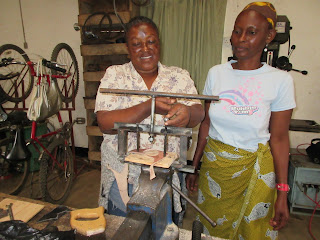Hey hey hey.
The other day was basically Christmas at Twende workshop
here in Arusha. We got MICROSCOPES!
(https://www.mccrone.com/mm/wp-content/uploads/2015/03/foldscope.jpg)
They’re samples of the Foldscope, an invention from
PrakashLab at Stanford, a team that’s democratizing science by making
microscopes affordable to scientists, students, and curious people around the
world. A whole Foldscope costs about a dollar, fits in a pocket, and stands up
to being dropped, thrown or stepped on because it’s made out of cardstock. The
microscopes also came with little magnets for attaching them to phone cameras
to take pictures. So, here are some of the first pictures we took:
From left to right: a dead butterfly I found on my walk to work, the end of that butterfly's foot, the edge of that butterfly's wing.
These pictures were taken with the Foldscope’s low
magnification lens. Next, I want to try out the higher magnification lens to
see what I can find in different sources of drinking water around here.
Hopefully we can integrate these microscopes into some of our school workshops.
Let me know in the comments if you think of any cool tiny things to look at or
any good uses for a pocket microscope. For more information, check out the
Foldscope website and the online community of Foldscop-ists.







